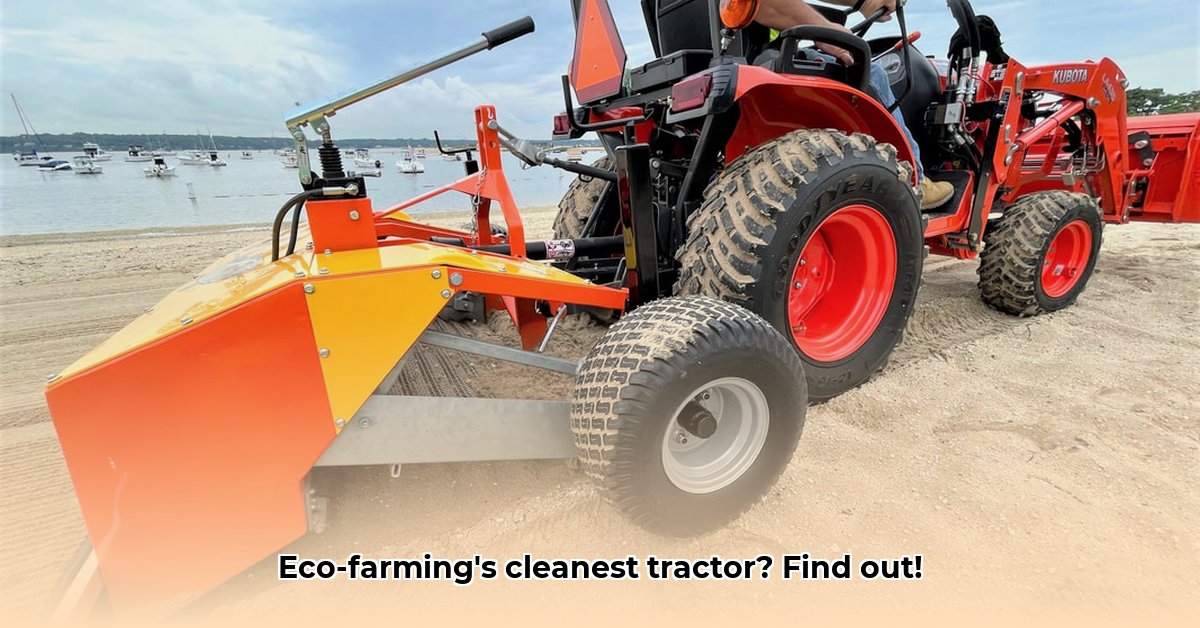
Tractor Cleaner Showdown: Dakota Wash HD vs. T&T Cleaner
Maintaining clean farm equipment is crucial for efficient operation, longevity of machinery, and environmental responsibility. This comparative review analyzes two leading tractor cleaners—Dakota Wash HD and T&T Cleaner—to help farmers and agricultural businesses make informed decisions in 2025. We'll examine cleaning efficiency, environmental impact, cost-effectiveness, and ease of use to determine which cleaner best aligns with sustainable farming practices.
Dakota Wash HD: High-Pressure Cleaning
Dakota Wash HD employs a concentrated formula and high-pressure foam application for a powerful clean, reaching hard-to-access areas. This approach prioritizes thorough cleaning, potentially reducing the frequency of cleaning cycles and minimizing long-term labor costs.
- Key Features: Concentrated formula for cost-effectiveness (lower product volume per use), high-pressure foam for superior cleaning power, claimed biodegradability.
- Application Method: Requires a high-pressure washer (additional equipment cost).
- Pros: High cleaning efficiency, potential for long-term cost savings (despite initial equipment investment), claimed wide geographic availability.
- Cons: Significant upfront investment in high-pressure washing equipment, lack of publicly available data on long-term environmental impact (specifically water usage and energy consumption), potential for high water consumption.
T&T Cleaner: Convenience and Ease of Use
T&T Cleaner offers a ready-to-use solution, eliminating the need for mixing or specialized equipment. Its simple application method prioritizes convenience and accessibility for various farm sizes and setups.
- Key Features: Ready-to-use formula, user-friendly application (spray bottle, pressure washer, or cloth), incorporation of a protective coating to potentially reduce future grime buildup, claimed biodegradability.
- Application Method: Versatile—spray bottle, pressure washer (optional), or cloth.
- Pros: Ease of use, no additional equipment required, potentially lower water consumption per application.
- Cons: Higher cost per application compared to Dakota Wash HD, limited geographic availability (currently Canada only).
Comparative Analysis: Dakota Wash HD vs. T&T Cleaner
The following table directly compares Dakota Wash HD and T&T Cleaner across key attributes:
| Feature | Dakota Wash HD | T&T Cleaner |
|---|---|---|
| Type | Concentrated, High-Pressure Foam | Ready-to-Use |
| Application Method | Requires high-pressure washer | Various methods (spray bottle, cloth, pressure washer) |
| Cleaning Efficiency | Very High (manufacturer claim; requires further verification) | High (manufacturer claim; requires further verification) |
| Cost per Application | Potentially lower (long-term) | Higher |
| Biodegradability | Claimed, requires independent verification | Claimed, requires independent verification |
| Environmental Impact | Requires comprehensive life cycle assessment (LCA) | Requires comprehensive life cycle assessment (LCA) |
| Availability | Claimed worldwide distribution | Currently limited to Canada |
| Packaging | Requires assessment of sustainability | Requires assessment of sustainability |
Actionable Insights for Sustainable Farming
- Large-scale operations with substantial budgets: Dakota Wash HD may offer long-term cost savings due to its concentrated formula, despite the initial equipment investment. However, a thorough LCA is crucial to evaluate its environmental impact.
- Smaller farms or those prioritizing ease of use and minimal upfront costs: T&T Cleaner's convenience and straightforward application may be more suitable. However, the higher per-application cost and limited availability must be considered.
- All farms: Independent verification of biodegradability claims and comprehensive LCAs for both products are essential for responsible decision-making in sustainable agriculture.
Conclusion: Choosing the Right Cleaner
The optimal tractor cleaner depends entirely on individual operational needs and priorities. Dakota Wash HD offers superior cleaning power but necessitates a higher initial investment and further environmental impact investigation. T&T Cleaner provides convenience and ease of use but at a higher per-application cost and currently limited geographic reach. Further research into the complete environmental profiles of both products, including life-cycle assessments, is urgently needed to support informed decisions in sustainable agricultural practices.
Regulatory Implications
This review highlights the critical need for further research into the full regulatory compliance of both Dakota Wash HD and T&T Cleaner to ensure alignment with evolving environmental standards. Such research is essential for responsible product selection and long-term environmental stewardship.
Sources
[1]: (Insert link to relevant source if available) [2]: (Insert link to relevant source if available)